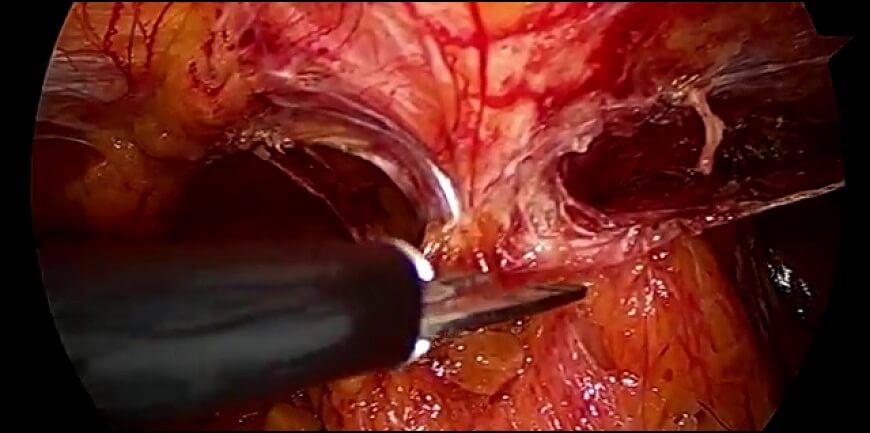An adhesion is a band of scar tissue that initially develops as part of the body’s natural repair mechanism in response to any tissue disturbance, such as from:
Adhesiolysis:
Adhesiolysis is the term for the surgery that is performed to remove or divide adhesions so that normal anatomy and organ function can be restored and painful symptoms can be relieved.
In some rare cases, adhesions form without visible or known tissue trauma. While some adhesion formation is part of the normal healing process, in some cases excessive scar tissue can develop, disproportionate to the original injury. As is shown in the pictures below, adhesions can bind your organs or tissue together in a way that begins to cause pain, organ dysfunction, or other symptoms. In some rare cases, adhesions can even cause life-threatening injuries, such as bowel obstruction.
Adhesions may appear as thin, avascular sheets of tissue similar to plastic wrap or as thick, vascular fibrous bands of adhesions, which are considered the more severe and more difficult to remove.
ADHESIONS SYMPTOMS:
Typically, patients with adhesions actually experience few or no symptoms at all. However, in more severe cases, adhesions can cause pain by pulling nerves, either within an organ tied down by an adhesion or within the adhesion itself. Other signs and symptoms include:
ADHESIONS DIAGNOSIS:
Depending on the clinical symptoms, x-rays may reveal the small obstructions caused by adhesions. If pain is the only symptom and there is no evidence of obstruction, many other tests may be done to confirm the diagnosis. For example, visually examining inside of the body with various scopes (endoscope, colonoscope, hysteroscope, sigmoidoscope, proctoscope) can identify strictures which may have formed as a result of adhesions. MRI evaluation may be useful in some cases. In cases in which the diagnosis is questionable, videolaparoscopic surgical exploration and visualization may be the best option for determining a definitive diagnosis.
Prevention
At the present time, there is no definitive cure for the prevention of adhesions. However, studies have shown that some adhesion barrier products, like Sepra Film and Intercede, can be helpful in certain situations.
DHESIONS TREATMENT (videolaparoscopically):
Adhesions within the abdomen can be effectively treated videolaparoscopically. Lysis of adhesions (adhesiolysis or enterolysis if it’s inside or near to the intestines (aka, bowel, rectum, colon, etc) can be performed as a part of other procedures (such as removal of ovarian cysts or fibroids), or as a procedure by itself. A common misconception is that adhesions are a contraindication to performing videolaparoscopy. However, this is definitely not true. In fact, videolaparoscopy offers several advantages over laparotomy in the treatment of adhesions. The laparoscope allows excellent visualization and magnification of the adhesions and the affected abdominal/pelvic organs. In addition, the CO2 gas which is used to inflate the abdomen provides a natural separation of the abdominal structures, allowing the adhesions to be clearly defined and effectively treated. The microsurgical principles which are employed with a laparoscopic approach are also much more effective in preventing the development of adhesions from the surgery itself.
Recovery from adhesiolysis is fast, with patients usually discharged from the hospital within 24 hours. A return to normal activities can be expected within 1-2 weeks.
Determining whether a patient is a candidate for adhesiolysis must be assessed on a case by case base.
